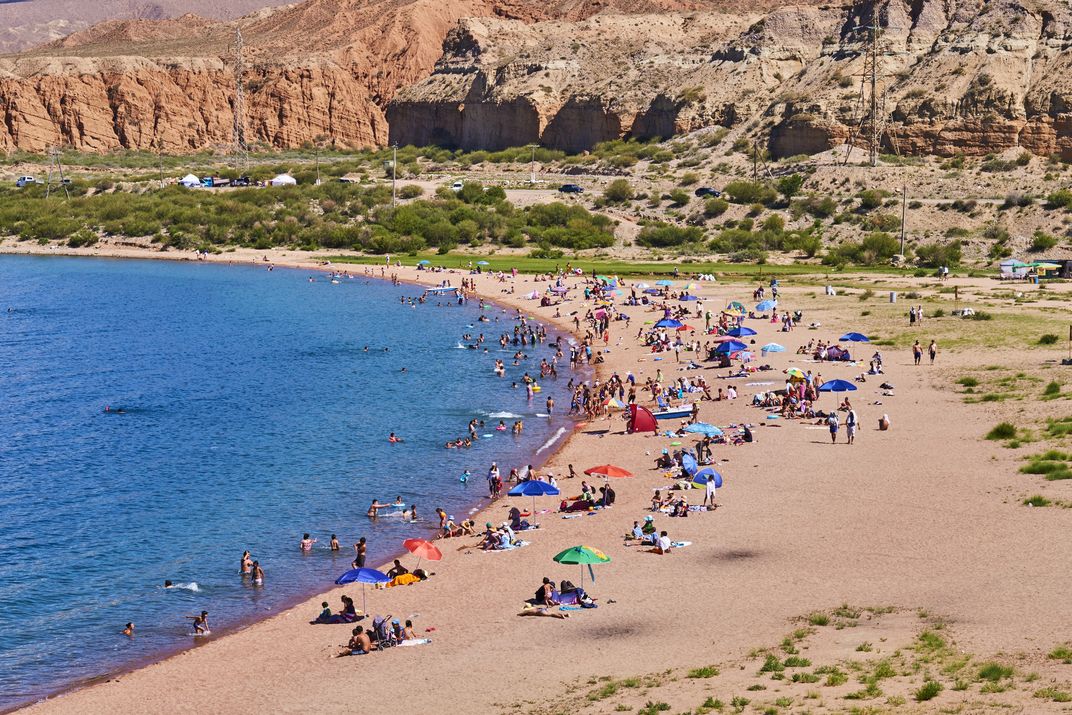Tucked within the Tian Shan mountains of eastern Kyrgyzstan sits Issyk-Kul, the world’s second-largest saltwater lake. With its deep, blue waters and surrounding snow-capped peaks, it’s often referred to as the “Pearl of Kyrgyzstan.” For thousands of years, this stunning natural marker was a stopping point along the legendary Silk Road, a land route for travelers connecting the Far East to Europe. Today it’s one of the country’s most popular spots for day hikers and multiday trekkers. Many of them come to explore features like Skazka Canyon, a sculpted landscape of red sandstone formations located along the lake’s southern shore, and to bed down in family-run guesthouses, swapping stories with other like-minded travelers.
Issyk-Kul is just one of thousands of alpine lakes scattered throughout this landlocked country, 94 percent of which sits more than 3,200 feet above sea level. At 77,200 square miles, Kyrgyzstan is one of Central Asia’s smallest nations, but it is brimming with natural features, including sky-high mountain peaks and jaw-dropping glaciers. With an abundance of explorable outdoor space, it’s no wonder that the country is earning a reputation as an adventure travel destination, especially among those taking to trails on foot. Adding to the attraction is the country’s Community-Based Tourism (CBT), a growing network that connects travelers with rural communities through everything from yurt stays to cheesemaking demonstrations.
People flock to Issyk-Kul’s Tong Beach in the summer. Tuul & Bruno Morandi/Getty Images
“We’re not a country that is rich in gas or oil,” says Asylbek Rajiev, executive director of CBT Kyrgyzstan, an organization that aims to improve the living conditions of remote mountain residents through rural tourism. “But what we do have is access to nature.”
The growth of Community-Based Tourism
Launched in Kyrgyzstan during the early 2000s, the Community-Based Tourism initiative is a way to tap into local natural and recreational resources countrywide, while providing new ways for rural residents to earn money. Through the implementation…
Click Here to Read the Full Original Article at Travel | smithsonianmag.com…
